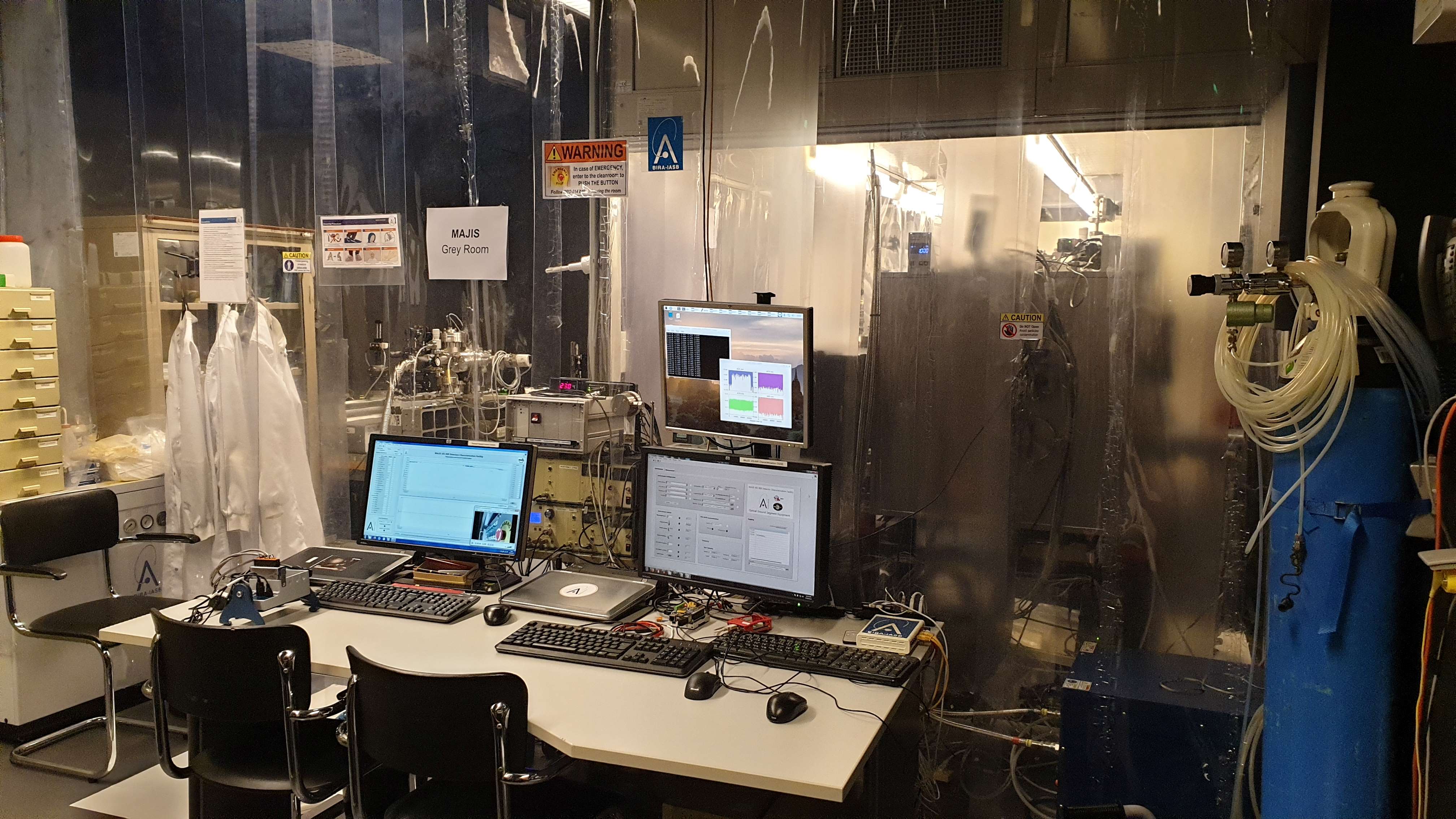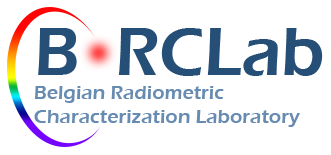Welcome to B.RCLab website
The Belgian Radiometric Characterization Laboratory (B.RCLab) is a new radiometric center of excellence located in Bruxelles, in the laboratories of the Royal Institute for Space Aeronomy of Belgium (BIRA-IASB) on the Uccle Plateau. The B.RCLab provides several rooms, including an ISO-5 certified cleanroom, to perform radiometric instrumental characterization with a spectral range extending from Vacuum Ultraviolet (VUV) to Near Infrared (NIR).

The BIRA-IASB is a Belgian federal scientific research institute. Its main tasks are research and public service in physics and chemistry of the atmosphere of Earth and other planets. It includes for example measurements of solar irradiance, spectroscopic measurements for trace species in the atmosphere, or aurora observations. Research started in the 60’s using ground-based or on board balloon and rockets instrumentation, followed in the 80’s by space projects. All these measurements are based on radiometry, which aims to measure the electromagnetic field in absolute or relative unit. For this dedicated instrumentation, it is mandatory to perform a complete radiometric characterization. Indeed, at the instrument level, measurement equations and transfer functions are used to convert raw electronic signals into meaningful and useful scientific data. Therefore, all the parameters appearing in these equations must be characterized (dark and saturation levels, correction factors for non-linearity, temperature dependencies, or angular response within the field of view). Moreover, transfer functions provide the key relationship to derive the uncertainty of any single measurement. Radiometric characterizations are even more crucial with instruments designed for space missions, as they face harsh vacuum, thermal and radiative environment. It is particularly important knowing post-flight calibration is not easily achievable. Consequently, there is a need to verify if the design is valid for flight conditions. It is worth to mention that BIRA-IASB is also involved in many missions for magnetospheric and ionospheric studies. However, these payloads don’t require radiometric characterization.
The B.RCLab emanates from the D42 division of BIRA-IASB (Solar Irradiance and Radiometry). One of out major projects has been the involvement in the development, the characterization and the absolute calibration of SOLAR/SOLSPEC, a spectroradiometer on board the International Space Station (ISS) that delivered solar reference spectra and irradiance variability measurements. Contributions were also provided to SPICAM-Light on Mars Express, NOMAD on ExoMars and ALTIUS, followed by a key involvement in the MAJIS (Moons And Jupiter Imaging Spectrometer) project, a part of the ESA JUICE space mission, in which BIRA-IASB was responsible for the characterization of the flight and spare model detectors. Therefore, engineers and scientists from BIRA-IASB developed a thermal-vacuum facility for this purpose.

In the wake of these projects, it was decided to consolidate the experience gained and to enhance the operational equipment in order to be involved in new ground-based or space projects. This is the reason for the existence of the Belgian Radiometric Laboratory. The laboratory is currently looking for new projects/partners to keep growing and diversify its activities.
The available facilities are summarized hereafter. These rooms are composed of instrumentations developed for:
- Thermal-vacuum VIS-NIR characterization: typically for sub-systems (array detectors for example) or whole space instrument to be qualified in a space-simulated environment: cooling cycle and relative/absolute VIS-NIR radiometric characterization (QE, DC, DSNU, PRNU, latency, linearity, …).
- Absolute radiometry, UV-VIS-NIR: for calibrations in spectral irradiance and radiance, using secondary standards (calibrated lamps). Typically for instruments dedicated to solar measurements (spectrometers, pyranometers, radiometers).
- Radiometric characterization, UV-VIS-NIR: typically for ground-based instrumentation dedicated to solar measurements in absolute or relative units. For example, for trace species observations (spectroscopy), solar measurements and aurora observations. It includes angular response characterizations, wavelength scale calibrations, straylight and linearity characterizations, relative spectral response characterizations, filter transmission
- VUV radiometric characterization: using a vacuum spectrometer, light source, calibrated detector. For radiometric characterizations (relative spectral response, linearity, transmission of filter) that require the exploration of wavelengths shorter than 200 nm.
- Large integrating sphere: for flat field characterization and photometry.
- Roof facilities: used to test the instruments designed for solar measurements. Typically for validation before field measurements.
Note: the large integrating sphere and VUV facility are still in development.
 |
 |
 |
